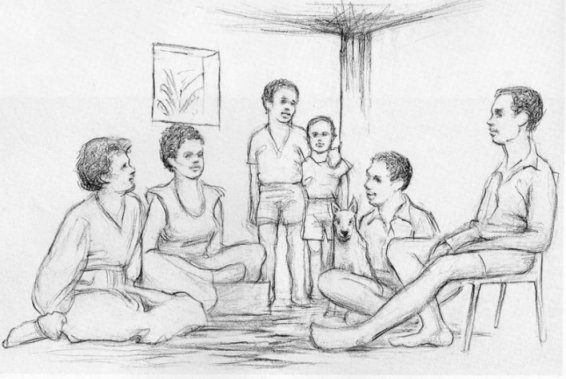You've no doubt seen illusions that use ambiguous pictures, which can be interpreted in different ways. One legendary example is the two faces and vase, shown below.
The interesting thing about this sort of illusion is the fact that when you see it for the first time, you're likely to settle on just one way of seeing it. You'll remain oblivious to the alternative possibility until a smug friend points it out.
This sort of automatic interpretation is obvious with contours and shapes, but it also applies to more complex meanings that we assign at a higher level. In fact, these sorts of snap judgments often color what we see, even though they aren't specifically related to vision.
For example, consider the following figure, which was the subject of a cross-cultural study. If you were asked to express this scene in a couple of sentences, how would you describe it? Think out your answer before continuing.
Most Westerners describe this scene pretty plainly. There's a group of people gathered in discussion (possibly a family), there appears to be a window on the left above one of the women, and the shading of the floor and corner of the wall make it clear that everyone is gathered indoors. But these obvious "facts" aren't quite as obvious to people with different experiences and hence different assumptions engraved in their brains.
When researchers showed this picture to East Africans, nearly all of them said the woman on the left was balancing a box on her head. And the corner of the room in the back was interpreted as a tree, under which the family is sitting. Now if you look at the figure again, you'll probably agree that this interpretation makes just as much sense as your own. As a Westerner who has spent much of your life indoors, your brain is used to interpreting scenes using the boxlike shapes and angular cues of modern architecture (like windows and the corners of walls). Rural East Africans have a different store of experience to bring to bear on new scenes. All this shows that a surprising amount of higher-level reasoning can leak into processes like hearing and seeing, and color the results without you even realizing it.
Get Your Brain: The Missing Manual now with the O’Reilly learning platform.
O’Reilly members experience books, live events, courses curated by job role, and more from O’Reilly and nearly 200 top publishers.



